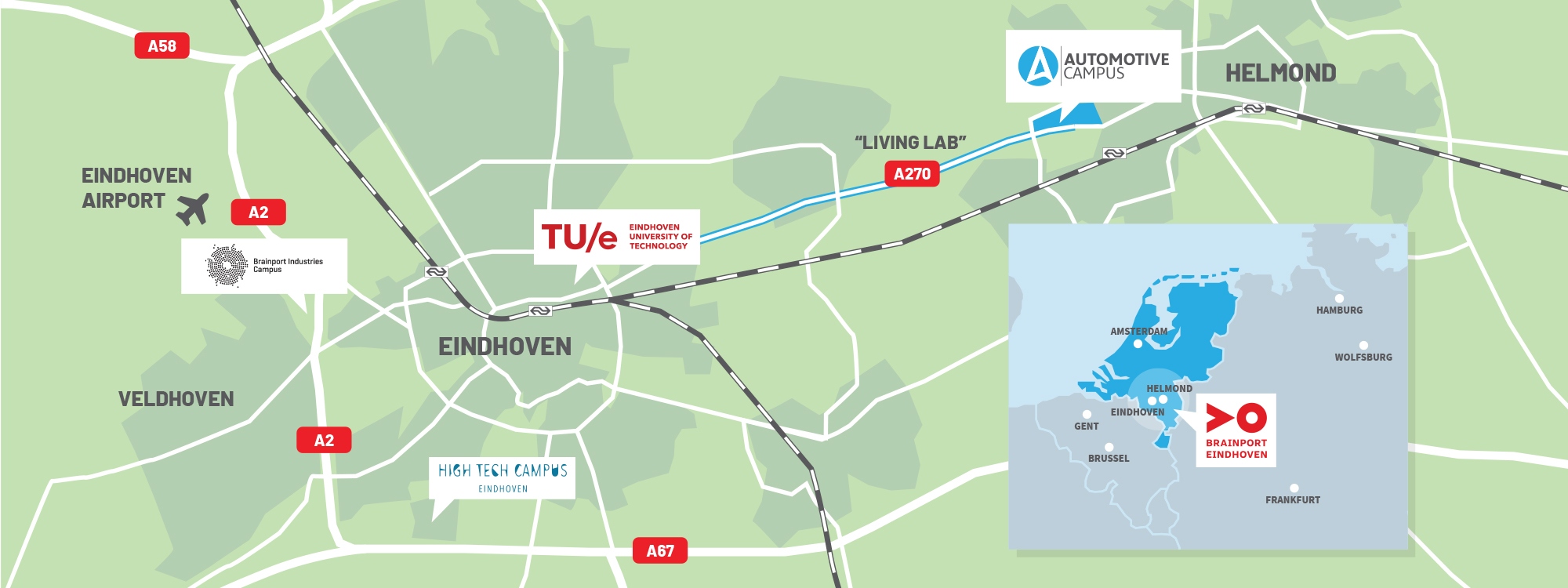Helmond and automotive
Helmond and automotive. A decade long marriage. But also a marriage that still has a glorious future ahead of it. How long has there been a connection between Helmond and the automotive industry? And what will the future of this partnership bring? Here are all the facts:
The story starts in 1975. Volvo Car takes over the passenger car branch of DAF. The company chooses to locate their operations on the street Steenovenweg in Helmond. Even now, their location on the Steenovenweg forms the central point of the Helmond auto industry. Until the late seventies, Volvo Cars produces DAF-models with a Volvo name tag on it. Then, the Volvo 300 and 400 series are developed consecutively in Helmond, after which they are produced at the factory in Born. In those days, about three thousand people worked at the Steenovenweg location.
The next milestone: In 1991 – as successor to Volvo Car - NedCar is founded. NedCar is a joint venture between Mitsubishi Motors Corporation, Volvo Car Corporation, and the Dutch government. The models that were produced during this time were the Volvo S/V40, Mitsubishi Carisma, and the Spacestar. The NedCar design department in Helmond was responsible for the development of the models that were being manufactured at the Born factory.
In 2001, the NedCar developmental department became an independent company with the name PDE Automotive. Later that year, PDE Automotive was sold to the German Benteler that has been acquired by Altran.
In 2003, the first steps towards the Automotive Campus are made. TNO moves their VEHIL lab for active security systems to the area.
In 2006, TNO decides to relocate their automotive activities from Delft to Helmond. This becomes the foundation of the Automotive Campus.
Advisory board Helmond, where representatives from the industry, knowledge institutes, and the government can come together to think of new impulses for the regional automotive cluster. After the project scales up to the level of Brainport, the idea for the Automotive Campus is put forward for the first time. Under the auspices of Brainport, a business plan is made. In 2008, the plan is completed. It's the official start of the High Tech Automotive Campus in Helmond.
In June of 2009, the Automotive House is opened by Minister Van der Hoeven, a moment that also marks the official start of the High Tech Automotive Campus. The Automotive House becomes the prime meeting place for automotive businesses, educational institutes, and the government to come together and network. In 2010, the globally unique climatic-altitude chamber is opened on the Campus by TNO.
After the fusion between ATC, HTAS, and the High Tech Automotive Campus into the national cluster organisation AutomotiveNL in 2012, the name changes from High Tech Automotive Campus to AutomotiveCampusNL. Late 2013, the hydrogen filling station is installed, one of four hydrogen filling stations in The Netherlands. They also make steps towards designing the public spaces.
January 2014: The Automotive facilities Brainport Center (AFB Center) is opened by Minister Kamp. The AFB is a shared facilities centre for SMEs. At the same time, the name AutomotiveCampusNL is changed to Automotive Campus. In 2017, the foundation Automotive Campus is founded with Lex Boon as its director.
That same year, the start-up Lightyear (which originated from the Solar student team from TU/e) settled at the Automotive Campus. They developed a car that runs on solar power, made in Helmond! In the last years, the complete Automotive Continuous Learning Programme has become a part of the Automotive Campus. This realised a 'Triple Helix' between Summa College, Fontys Automotive, and the Eindhoven University of Technology.
Stay Tuned

Our
partners

